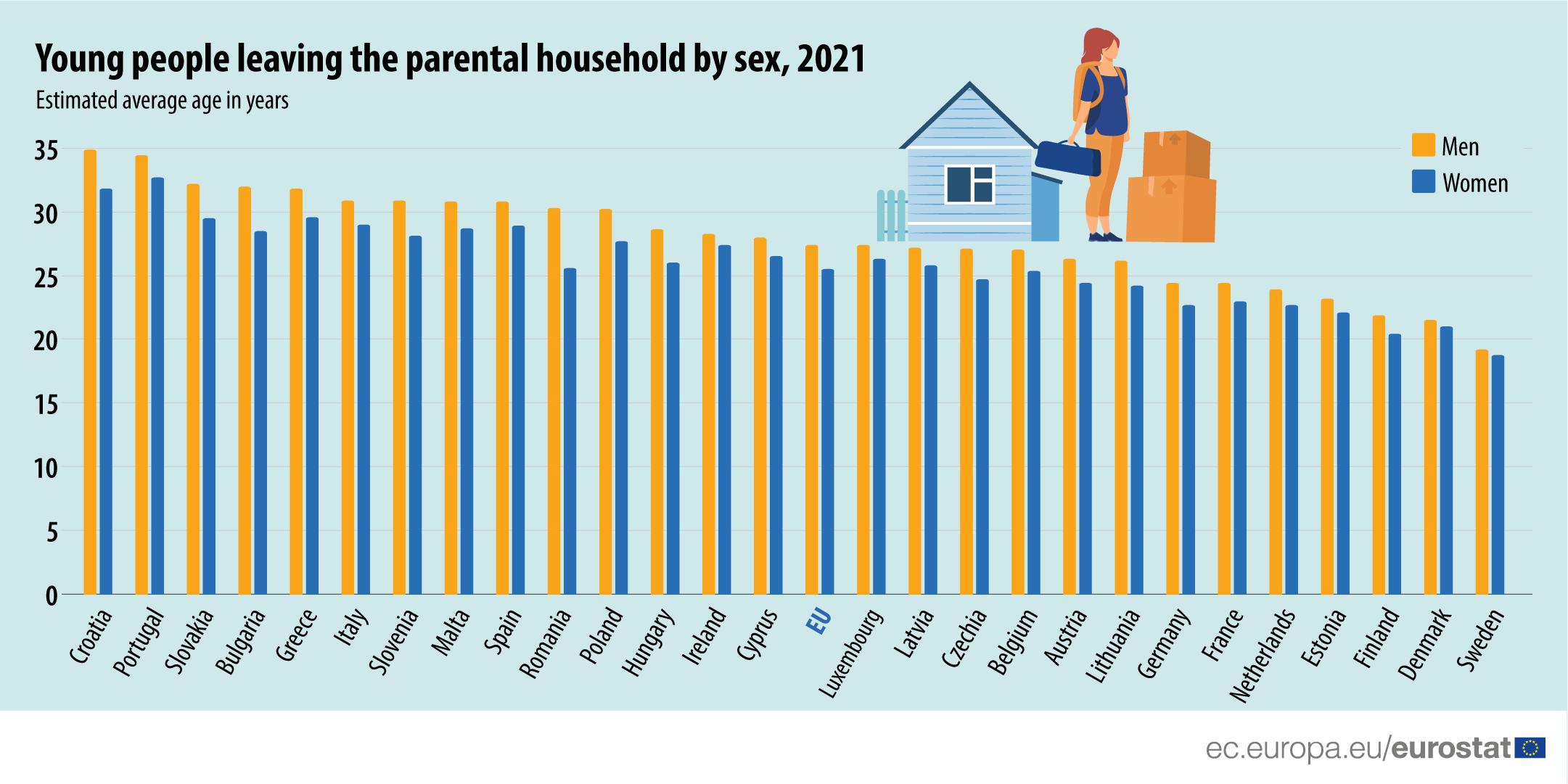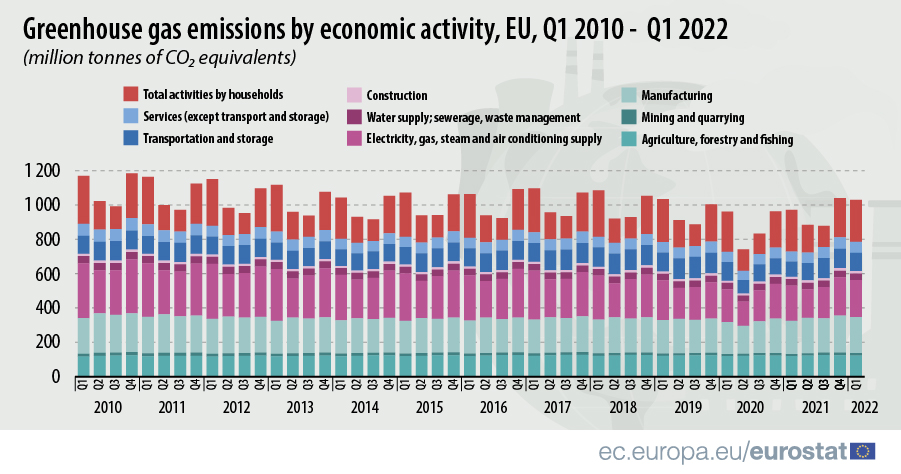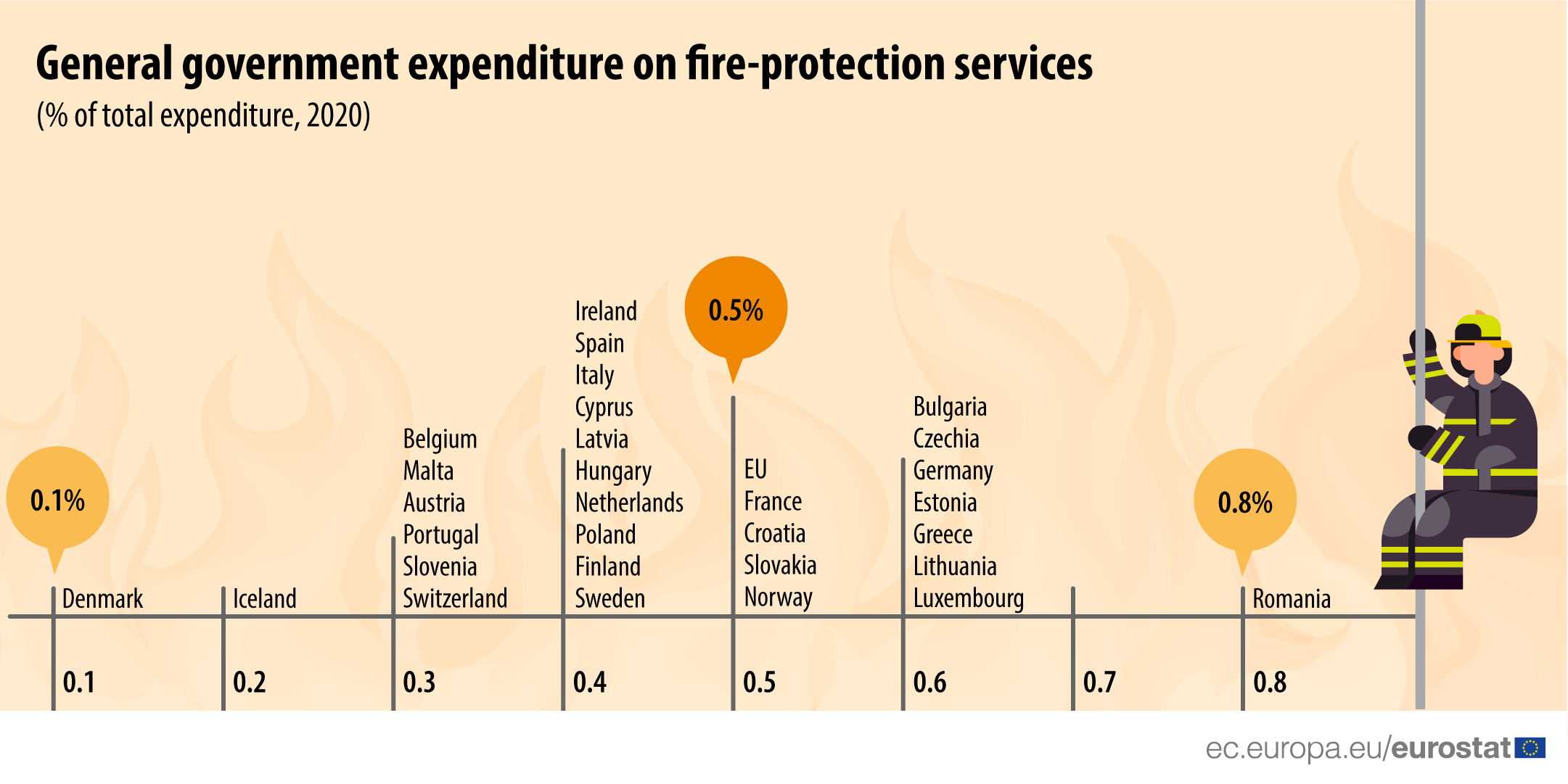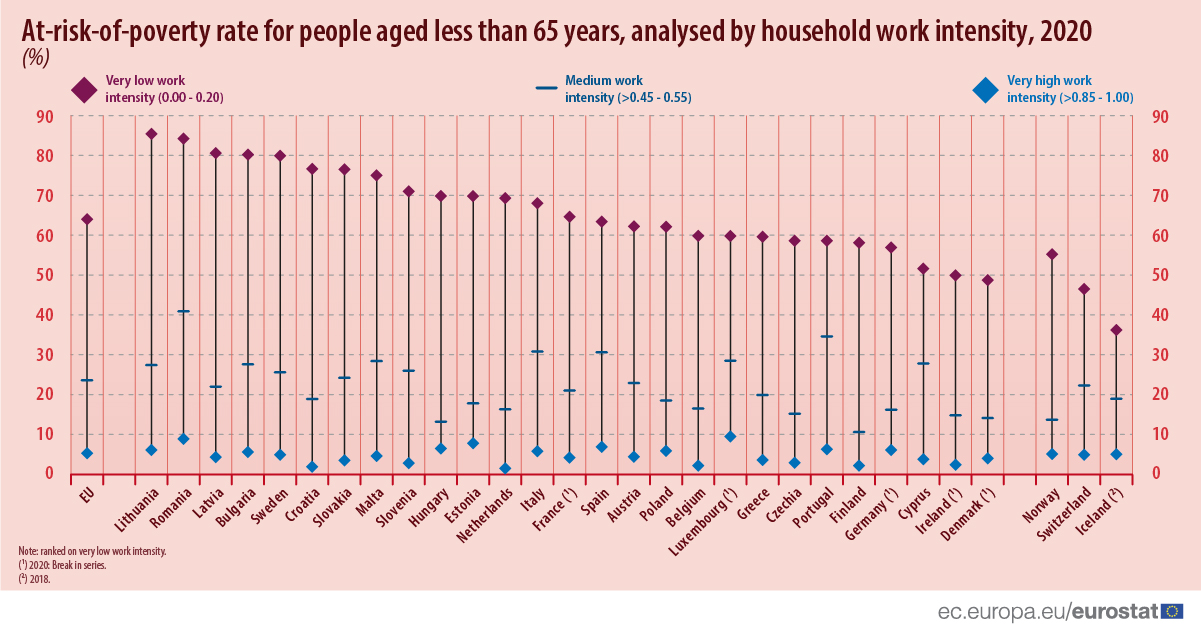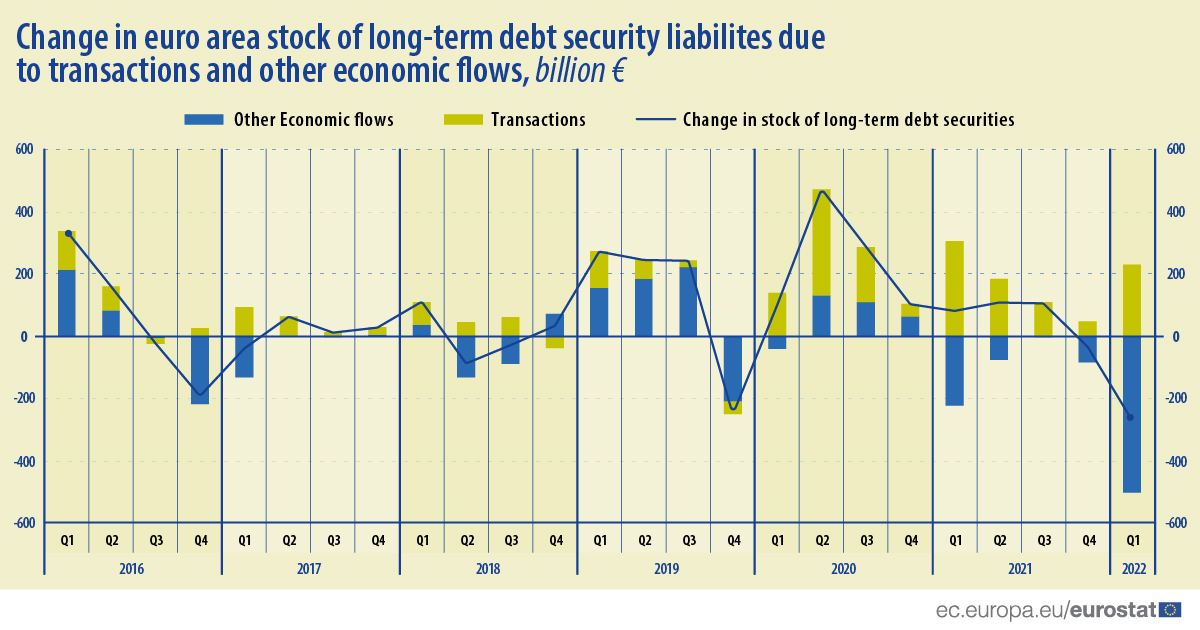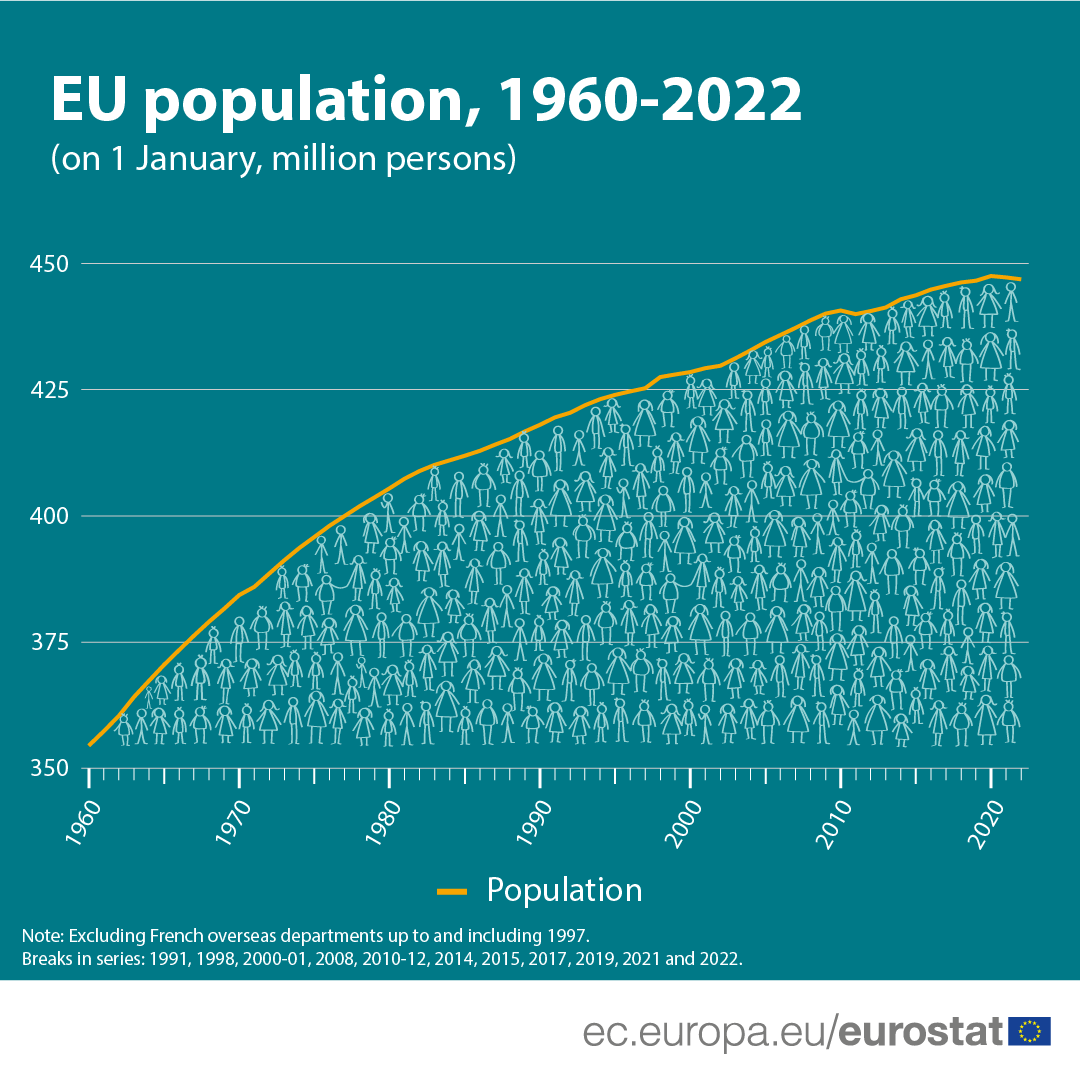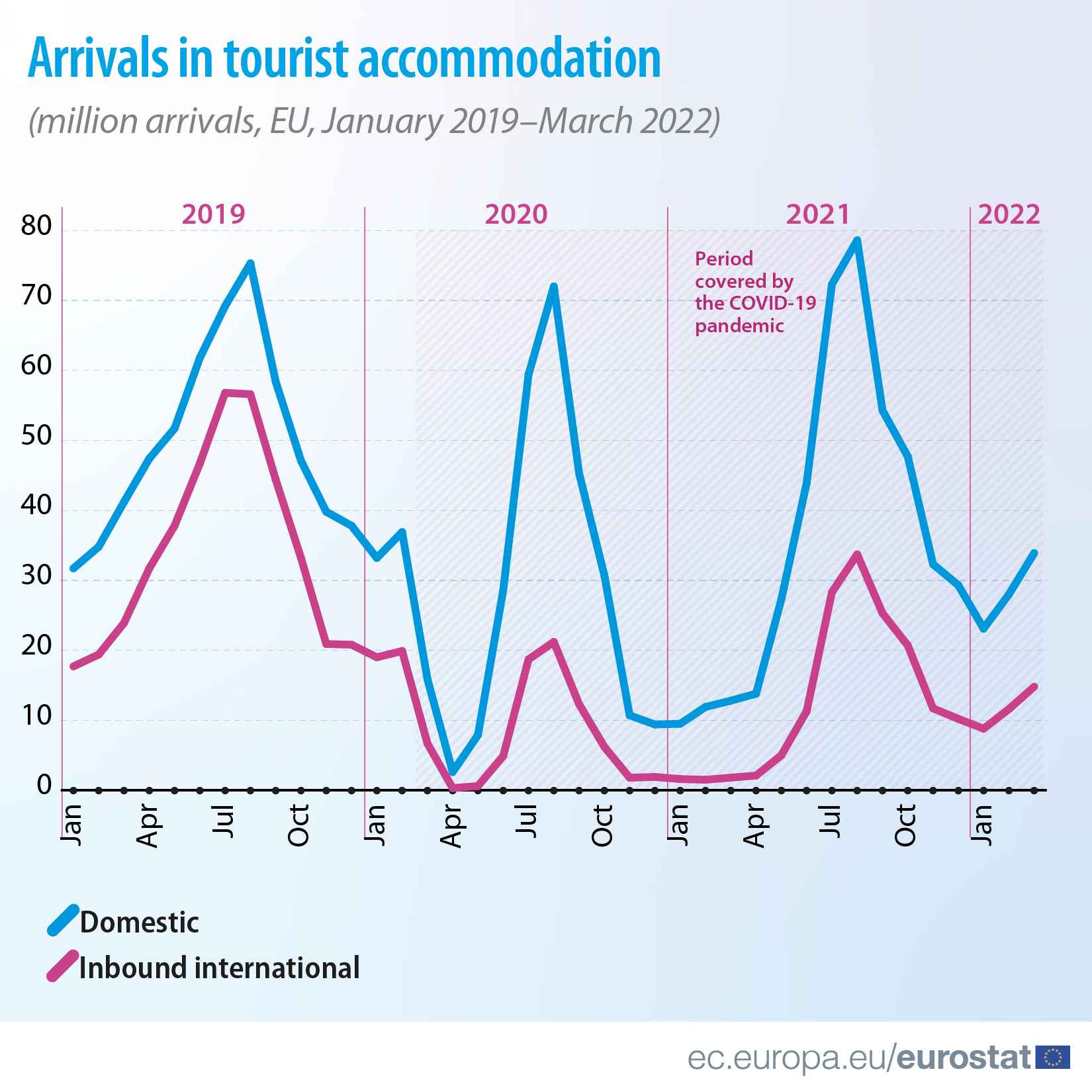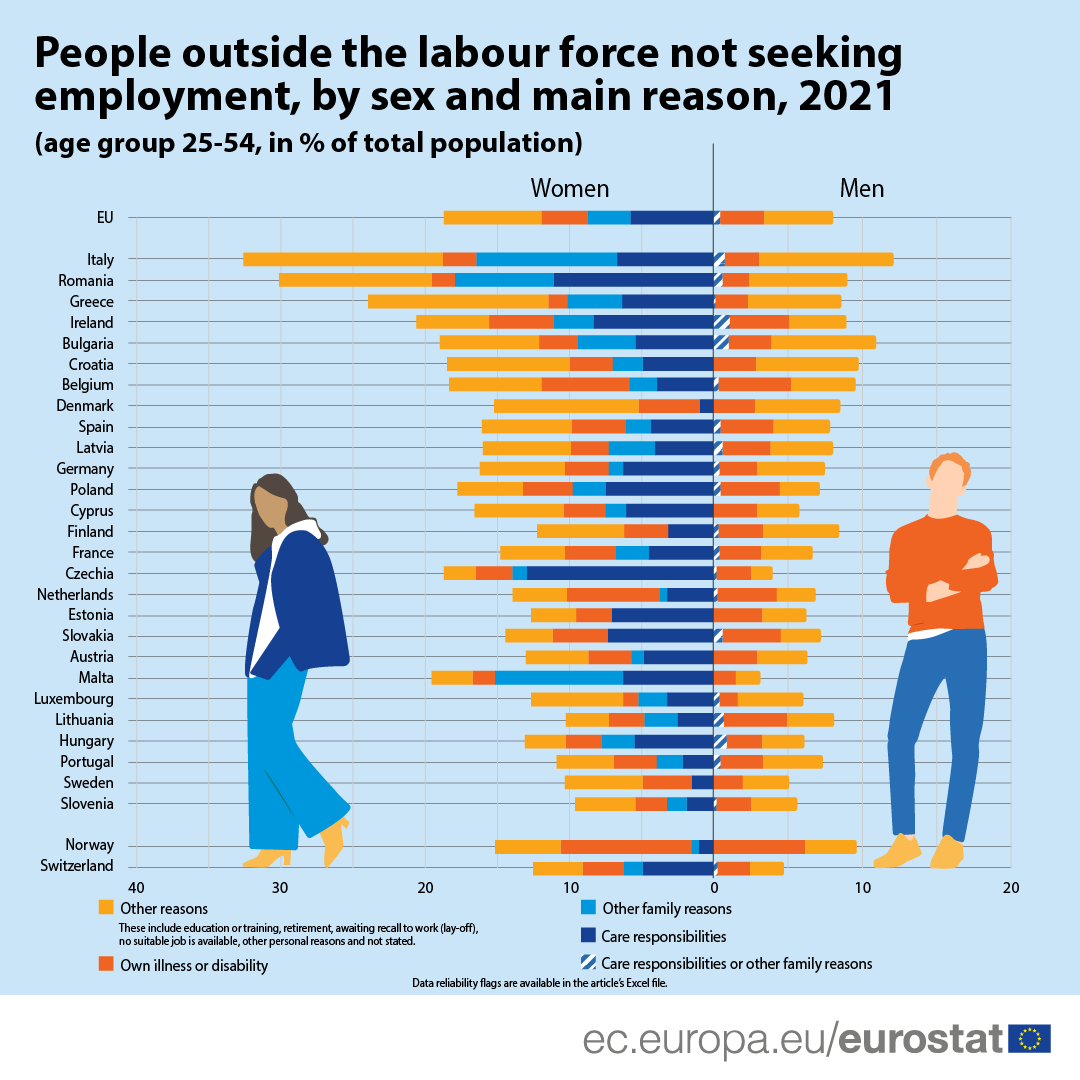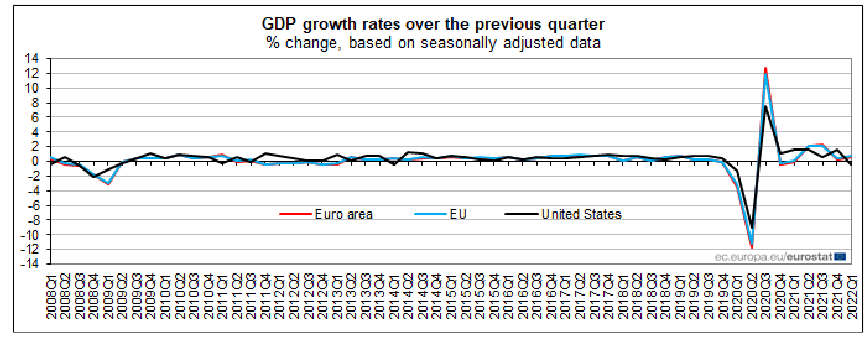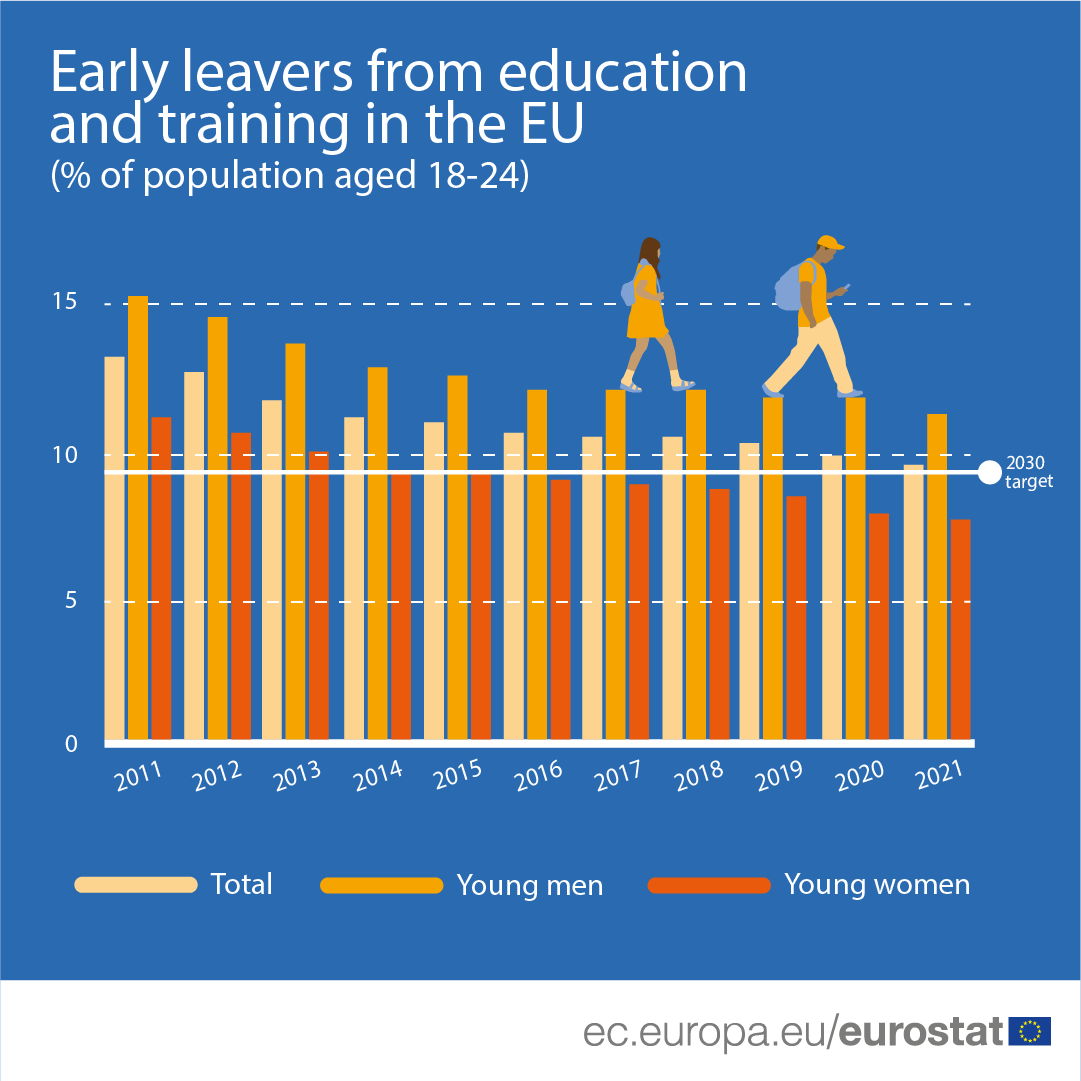In 2021, across the EU, young people left their parental household on average at the age of 26.5 years. However, this average varies among the different EU Member States.
Statistics
In the first quarter of 2022, EU economy greenhouse gas emissions totalled 1 029 million tonnes of CO2-equivalents (CO2-eq), a 7% and 6% increase compared with the same quarter of 2020 and 2021, bu
In 2020, general government expenditure in the 27 EU Member States on "fire protection services" amounted to €32.9 billion, a 6.4% increase from 2019, when expenditure was around €30.9 billion.
Work intensity reflects how much all working-age household members have worked as compared to their full potential.
In the first quarter of 2022, the market value of the outstanding long-term debt securities in the euro area decreased by around €501 billion due to a decrease in value in the financial markets.
After a first decline in population growth in 2020 due to the impact of the Covid-19 pandemic, the EU’s population decreased again in 2021, from 447 million on 1 January 2021 to 446.8 on 1 January
Looking at the past two years, COVID-19-related measures took their toll on many economic sectors, including tourism.
In 2021 the share of women in the EU (25-54 years old) outside the labour force who were not seeking employment was much higher than for men (18.5% compared with 8.2%).
In the first quarter of 2022, seasonally adjusted GDP increased by 0.6% in the euro area and by 0.7% in the EU compared with the previous quarter.
The share of 'early school leavers,’ a term that refers to early leavers from education and training (aged 18-24), has steadily decreased in the EU over the last 10 years, from 13% in 2011 to 10% i
